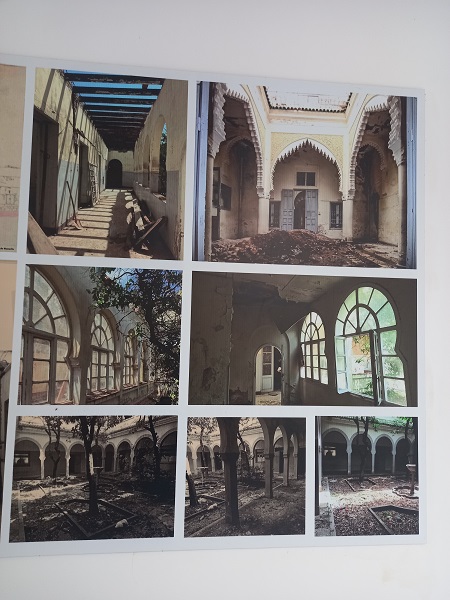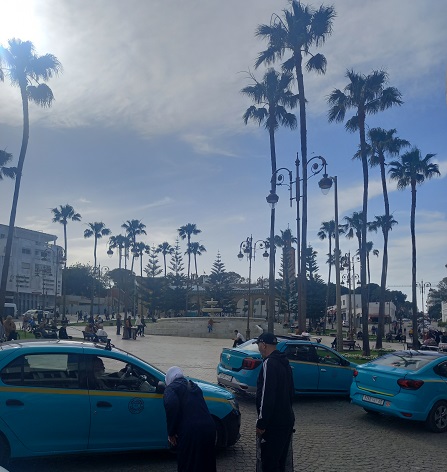This is my third day in Tangiers, and it is very different to Casablanca. I am staying in the heart of the medina, which is very Spanish inspired, all around me are yellow and white buildings. However the medina itself looks very similar to others in terms of its gates, walls, and lots of little shops with wooden porches.




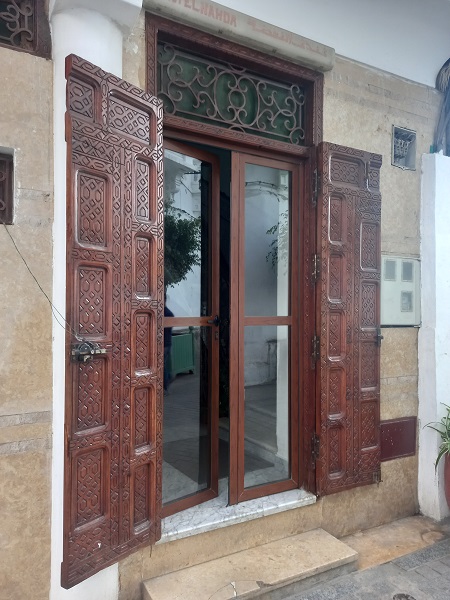

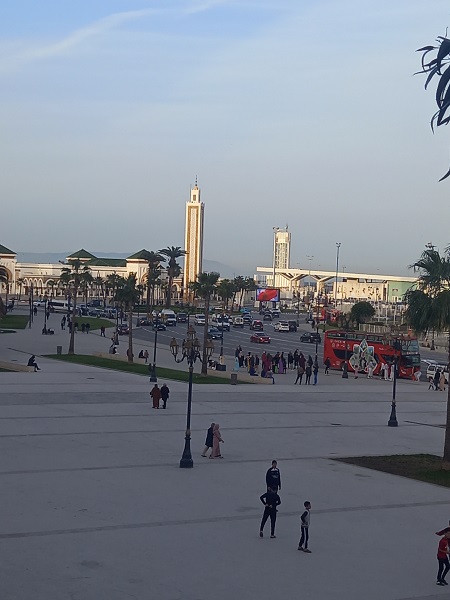
I am going on another wander later today so will take more pictures of the walls for you. It was a bit mizzly and grey yesterday so I have not done much scenic photography yet.

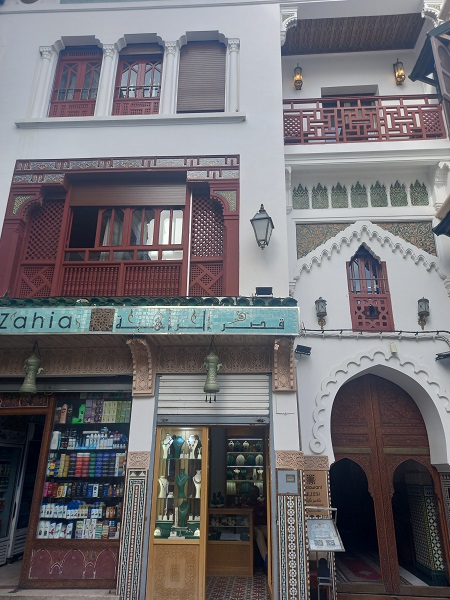
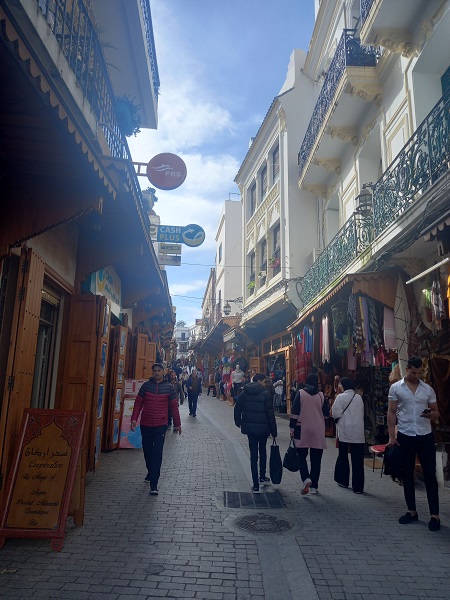

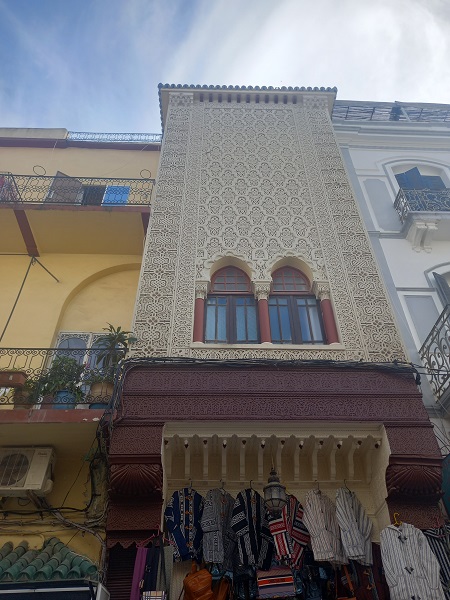
I actually partly chose where to stay, the Hotel Fuentes, as they had these photos on their description. The Petit Socco which is the little square where my hotel is hasn’t changed much since the 1920s when these pictures were taken. They have a café downstairs which looks like it could have made a fabulous ballroom.
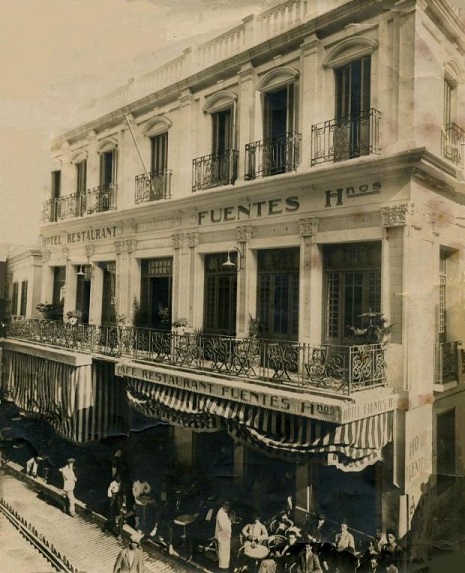
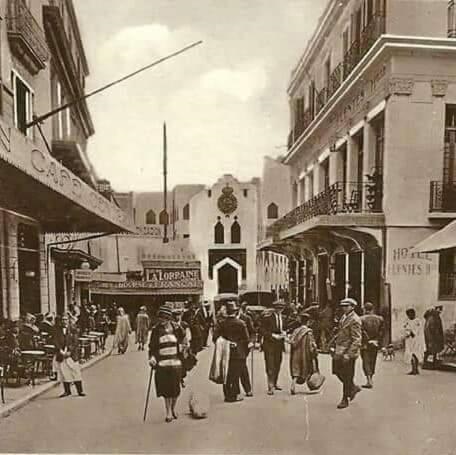
As you can see the hotel has hardly changed at all, and I enjoyed my breakfast on the terrace yesterday people and cat watching.
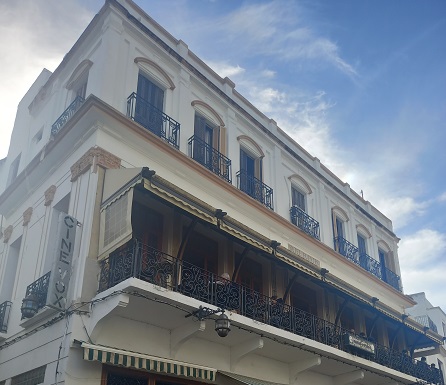

There are far more tourist shops now though, but the medina is still lovely. There has been a lot of restoration, and there are gorgeous cafes and restaurants, and lots of jewellery shops, among other souvenirs. I am trying to be really good and remind myself that I have at least six Moroccan candle holders at home, but it is very difficult!
This is the place, Restaurant Al Maimouni, just inside the medina walls, that I ate in on the first evening, which I may just have chosen for its beautiful tiles. Look at that gorgeous cutlery as well! The tapas was a delicious olives and Arab soft cheese dish.
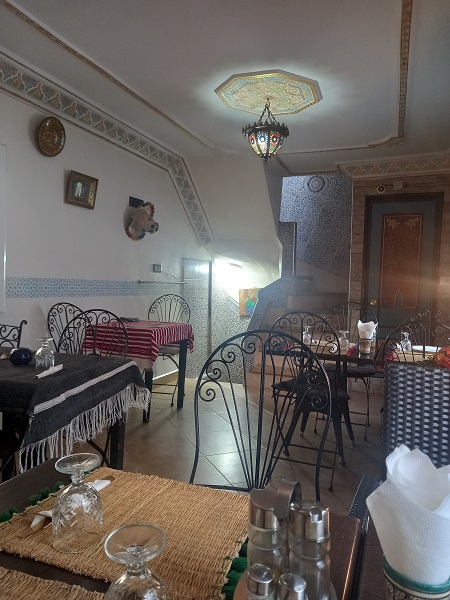






This is a city with a fascinating history and you can really feel it here. Casablanca is so modern, and although there is a modern city here at the other side, the older areas are still very thriving, whereas in Casablanca they didn’t seem to be. I expect that is due to tourism, it is clearly far more of an international tourist destination, and I have seen people of more nationalities here than in any city I have visited so far.
This very much reflects the history of the city, Tangier has been owned, occupied, shared by so many different countries in its lifetime. The photo above shows the tower of the Spanish mission, and a little further down the street is the main mosque.
It was actually given to England as part of Catherine of Braganza’s dowry when she married Charles 2nd, at the time it was occupied by the Portuguese. England built fortifications and used it as a defensive port.
In the late 1800s it was the diplomatic capital of Morocco, and in 1923 it became known as the Tangier International Zone, administered by France, Spain and the UK. From then on until Moroccan independence in 1956 it developed a reputation that Wikipedia describes wonderfully!
‘In the 1940s until 1956 when the city was an International Zone, the city served as a playground for eccentric millionaires, a meeting place for secret agents and a variety of crooks and a mecca for speculators and gamblers, an Eldorado for the fun-loving ‘Haute-Volee’. During the Second World War the Office of Strategic Services operated out of Tangier for various operations in North Africa.’
I have not seen any of the above so far, but it definitely has a vibe to it that is very different to other cities. The setting is also beautiful, it in a city built on hills, and I can see the Spanish coast from here! Pity I am not allowed back in until April 9th 😦
I think the other thing that helps with the sense of history for me, is that there are so many museums. As you know I love visiting museums and am looking forward to seeing three here. They are all housed in historic buildings as well, which is a double dose of history!
My first visit was to the old French Consulate building, now the Musee Dar Niabla, just a short walk from my hotel in the medina. It has been beautifully restored from its very sad former state as pictured here.






The museum has a really interesting timeline of Tangier’s history on the ground floor, and is also an art gallery. Tangier has attracted many artists and writers in its history, and they currently have a selection of portraits and landscapes by international artists. They are not only lovely to look at, but beautifully framed.








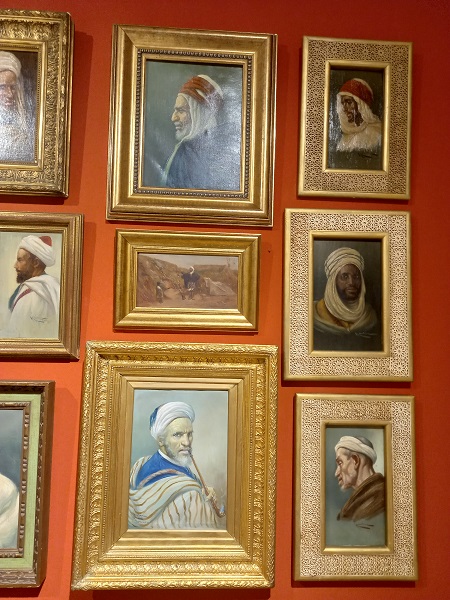
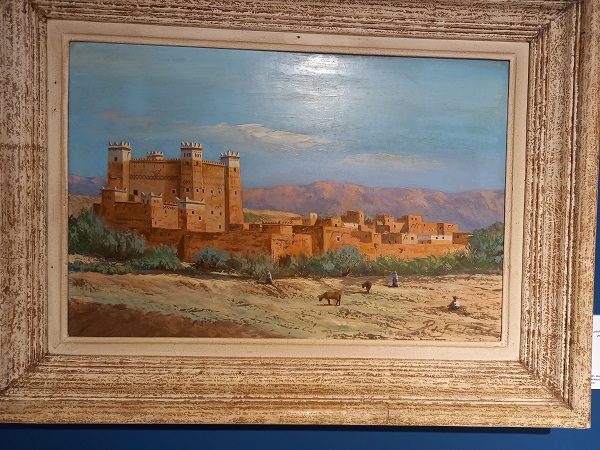

They also have some ceramic panels, depicting scenes of Tangier life. You may remember that I posted about zellige (or zellij) which is the mosaic style used in the mosque and my last hotel. This grew in popularity in the 1900s, but is incredibly time consuming to make. The solution was to create zellige style enamelled tiles like these, which are faster and cheaper. I have seen them before in many Spanish buildings, and didn’t realise the connections.

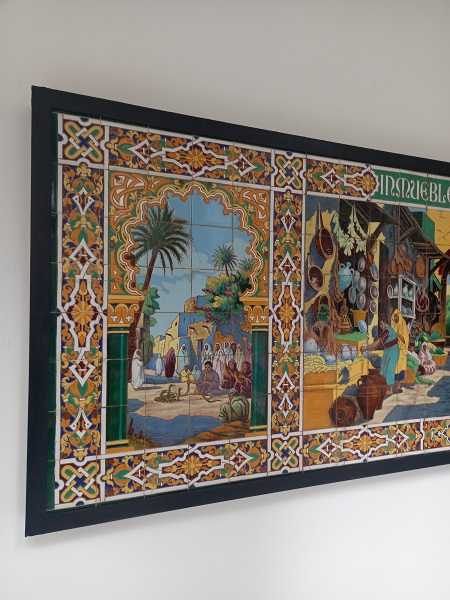

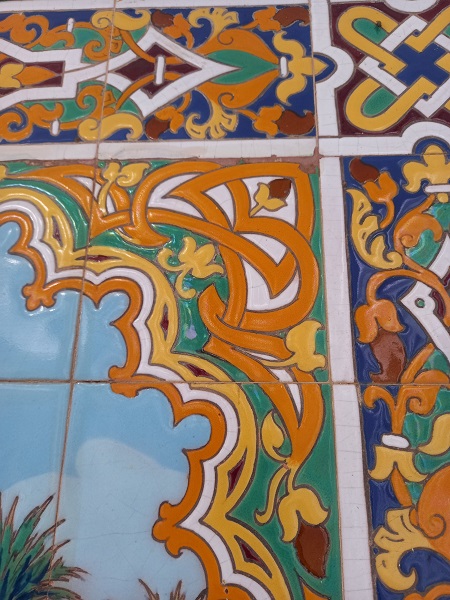



I am off for a wander around the port area soon, and to museum number two. In between I will of course have to stop off for more delicious Moroccan tea, and a spot of people watching while imagining myself here in the glamour and intrigue of the past!
Oh and in answer to my question about petit taxi colours, here they are all turquoise with a yellow stripe. Guesses for Fes and Marrakesh please!
See you all again soon. Until then have fun, take care, stay safe and thanks for visiting.



